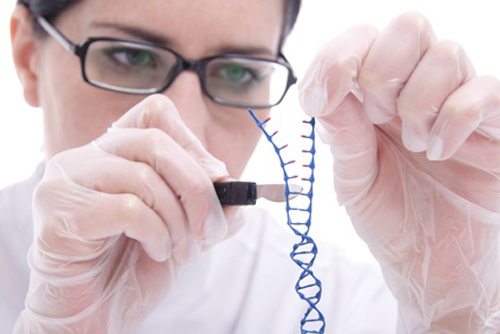Scientists at the Harvard Stem Cell Institute at Massachusetts General and Boston Children’s hospitals say that a novel gene editing method has been used to create what might turn out to be an effective technique for blocking HIV from invading and destroying patients’ immune systems.
Their paper (“Efficient Ablation of Genes in Human Hematopoietic Stem and Effector Cells usingCRISPR/Cas9”) in Cell Stem Cell reportedly is the first published study of a group using CRISPR/Cas technology to precisely edit clinically relevant genes out of cells collected directly from people, in this case human blood-forming stem cells and T cells.
“We report CRISPR/Cas9 targeting of two clinically relevant genes, B2M and CCR5, in primary human CD4+ T cells and CD34+ hematopoietic stem and progenitor cells (HSPCs),” wrote the investigators. “Use of single RNA guides led to highly efficient mutagenesis in HSPCs but not in T cells. A dual-guide approach improved gene deletion efficacy in both cell types. HSPCs that had undergone genome editing with CRISPR/Cas9 retained multilineage potential.”
Though the researchers believe this new approach to HIV therapy might be ready for human safety trials in less than five years, they themselves offered three strong points of caution: The first and most obvious is that they could run into unexpected complications; the second is that the history of theHIV/AIDS epidemic is littered with “cures” that turned out not to be; and finally, even if this new approach works perfectly, it will require additional developments to be applicable in the areas of the world that have been the hardest hit by the epidemic.
The work was led by Chad Cowan, Ph.D., and Derrick Rossi, Ph.D., associate professors in Harvard’s Department of Stem Cell and Regenerative Biology.
HIV specifically targets T cells and enters via a gene receptor (CCR5) that serves as a doorway into the cells. Once inside the T cells, HIV replicates and kills off the host cells, leaving patients at the mercy of a variety of opportunistic infections.
Using the CRISPR/Cas gene editing technology, the Cowan and Rossi teams knocked the CCR5 receptor out of blood stem cells that they showed could give rise to differentiated blood cells that did not have CCR5. In theory, such gene edited stem cells could be introduced into HIV patients via bone marrow transplantation, the procedure used to transplant blood stem cells into leukemia patients, to give rise to HIV-resistant immune systems.
“We showed that you can knock out CCR5 very efficaciously, we showed that the cells are still functional, and we did very, very deep sequencing analysis to show that there were no unwanted mutations, so it appears to be safe,” noted Dr. Cowan. “The next step is animal trials in collaboration with the Ragon Institute at Mass General. There are excellent mouse models you can give a human immune system and then infect with HIV. We can give our cells to the mice and see if they’re protected from HIV.”
Once those studies are completed, and if they are successful and complications do not arise, the next step would be to apply to the FDA to launch Phase I human trials. Dr. Cowan explained that it is too early to predict how soon such trials might begin.







